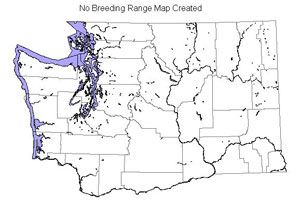

|
Bufflehead, Diving Duck (Bucephala albeola) 
Description: The bufflehead is small, chubby duck with a small dark gray bill. The males are mostly white, but have a black back and head. The male has a large white patch extending from the eye to the back of the head. The male is slightly larger than the female. The female is dark brown and is lighter brown below. The female has a single white patch on her cheek.
Calls: This bird is usually silent. Courtship display includes guttural chattering. Male may give squeal or growl in late winter or spring; females give a throaty cluck when seeking nests in summer. Listen to calls of this species » Range / Habitat: Most Buffleheads breed in the northwestern part of North America. Buffleheads live by lakes, rivers and bays. Diet: These diving birds forage underwater. Buffleheads typically eat water insects, snails, crustaceans and water plants. Behavior: Buffleheads usually are seen in small groups. As one or two feed, the others will stand watch for potential danger. While a flock is diving for food there is almost always at least one bird on the surface watching for danger. Predators of adults include Peregrine Falcon (Falco peregrinus), Snowy Owl (Nyctea scandiaca), Bald Eagle (Haliaeetus leucocephalus), Great Horned Owl (Bubo virginianus) and Cooper's Hawk (Accipiter cooperii). 
Reproduction: Their breeding habitat is wooded lakes and ponds in Alaska and Canada, almost entirely included in the boreal forest or taiga habitat. They nest in cavities in trees, often using old Flicker or Pileated Woodpecker nests. A clutch may range from 5 to 10 eggs. The incubation period ranges from 28 to 33 days. The female abandons the nest after 5 to 6 weeks, and the young fledge at 45 to 55 days of age. Migration: As winter comes, Buffleheads migrate to water near the coasts of the Atlantic, Gulf and Pacific Oceans. When they migrate, they fly during the night under the cover of darkness. Should they face bad weather, they will fly during the day.
Did you know?
Animal silhouettes available to purchase » Photos: Natures Pics Home | About Us | How to Participate | Biodiversity Modules | Projects | Maps | News | Resources |